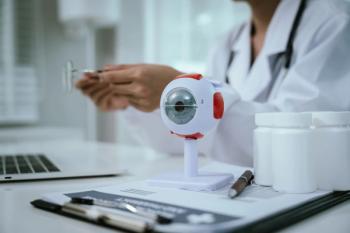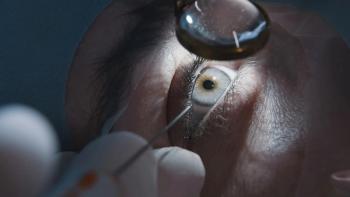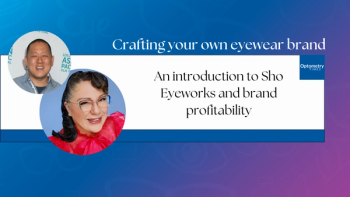
New research on improving contact lens comfort for patients with dry eye
This month’s podcast guest Chandra Mickles, OD, MSc, FAAO, FSLS, is an associate professor at Nova Southeastern University College of Optometry and the
She is passionate about educating the next generation of optometrists about the importance of treating even the earliest stages of
Dr. Mickles teaches a specialty
Previously by Dr. Lyerly:
Interest in research
"My ultimate goal in research for patient care is to improve outcomes for
Most of her research is investigator initiated-she will apply for a grant or propose a research project to a financial backer aimed at providing data she hopes will help doctors make decisions to improve patient outcomes.
With so many challenges facing patients, Dr. Mickles is working on several upcoming and ongoing research studies aimed at practically impacting day-to-day patient care.
Up next, she is participating in a multicenter trial looking at digitally induced dry eye in children. It focuses on video game playing and how it affects blink rate and dry eye.
Related:
She is also part of a
One such project that she participated in has made a big impact on her prescribing philosophies when it comes to specialty contact lenses. Knowing that
Dr. Mickles worked with Melissa Barnett, OD, FAAO, FSLS, FBCLA, and Jennifer Harthan, OD, FAAO, FSLS, on a double-masked, randomized, multicenter research study looking at the impact of Tangible Hydra-PEG coating on patient comfort in scleral lens wear. The study was presented at the 2019 Global Specialty Lens Symposium.2Also by Dr. Lyerly:
Study overview
The study examined 19 scleral lens-wearing patients with moderate to severe
Patients were given scleral lenses with the same parameters as their own lenses but with Tangible Hydra-Peg coating; patients wore the new lenses for one month.
Related:
Statistically significant improvements were seen in all categories when patients wore the Tangible Hydra-Peg coated lenses, according to the study. Patients not only reported improvement in contact lens comfort, but also in vision consistency. They experienced foggy vision at almost half the rate of occurrence than in their uncoated lenses.
Dr. Mickles says she was surprised there was such a dramatic improvement in
Also by Dr. Lyerly: An OD's experience with online contact lens disruptors
What patients need to know
Dr. Mickles shares that while Tangible Hydra-Peg can be a great solution for patient comfort and experience in
The Tanigble Hydra-Peg coating makes the lenses more slippery
Because Tangible Hydra-Peg purposefully improves the lubricity and reduces the friction of the contact lens on-eye to improve comfort, it can also make the lens more difficult to remove. Fingers may slip right off when attempting to grasp the lens.
If patients use a plunger to remove scleral lenses, they may not experience this challenge. However, patients wearing soft or hybrid lenses may have difficulty.
Synergeyes recommends patients use a tissue draped over their fingers to remove the lens. Consider sharing this video with patients for further instructions:
Abrasive or alcohol-based cleaners can damage the Tangible Hydra-Peg coating.
Dr. Mickles says she is careful to prescribe specific solutions for her patients and educate why this is the solution they need to use going forward.
Tangible Science has launched new solution
Related: Peroxide lens care effective for GP lens wearers
Sclerals for dry eye
Dr. Mickles says that she has had great success with fitting scleral lenses for patients with moderate to severe dry eye.
In her experience, scleral lenses for dry eye work best for patients for whom aqueous deficiency is the primary cause of
Read and listen to more Defocus Media content here
References:
1. Aldridge C. Breaking the cycle of contact lens dropout. CL Spectrum. Available at: https://www.clspectrum.com/issues/2015/november-2015/breaking-the-cycle-of-contact-lens-dropout. Accessed 7/25/19.
2. Mickles C, Harthan J, Barnett M. A surface treatment solution for scleral lens wearers with dry eye. Tangible Science. Available at: https://tangiblescience.com/wp-content/uploads/2019/01/Final-GSLS-2019-Mickles-Tangible-Paper-Presentation.pdf. Accessed 7/25/19.
Newsletter
Want more insights like this? Subscribe to Optometry Times and get clinical pearls and practice tips delivered straight to your inbox.













































